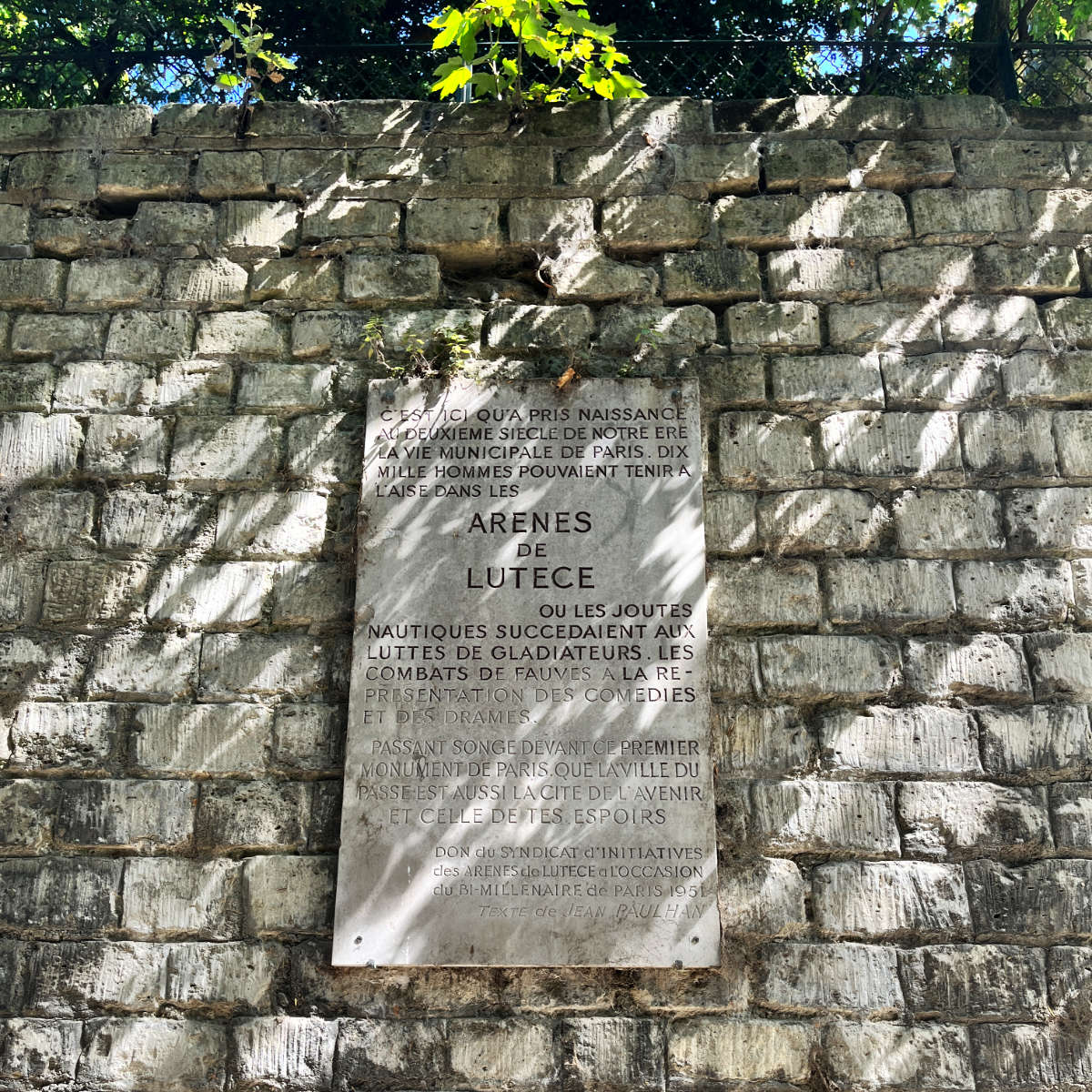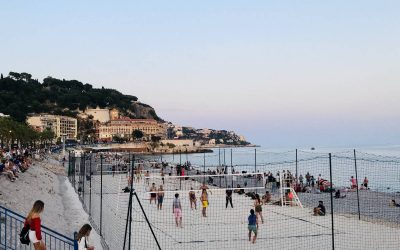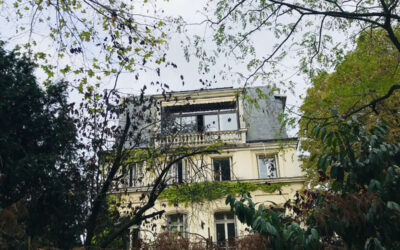Paris, the city that was known in ancient Roman times as Lutece. It was not as important a city as Lyon (more central) was at the time, or Marseille (with its natural harbor).
But Lutece was none-the-less important enough to have a city wall constructed around it. The city walls of Paris expanded as time went on, and the city grew in importance becoming the capital of France.
As more and more people came to Paris, its industry and population flourished, and the city grew. But the wars on the European continent meant that it would need protection, meaning more walls were constructed.
Today there is no wall to keep out invading armies, but something that keeps its inhabitants in. It is the ugly side that tourists rarely visit, but that locals know all too well: the Boulevard Périphérique. The Périphérique is a giant 8 lane road that stands on the old city walls in Paris. It is just as effective as the wall, and today it is clear that these walls have closed in on Paris, and are choking the glorious City of Lights.
Old City Walls
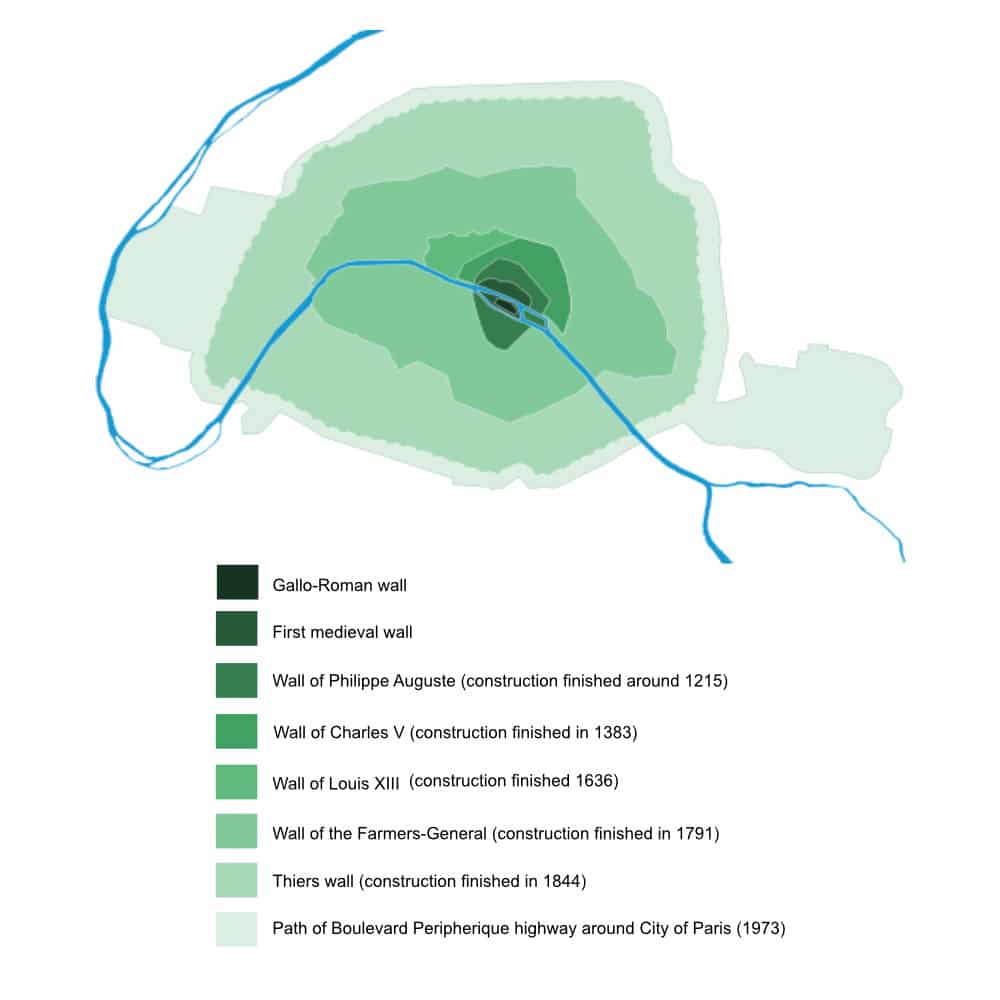
As you can see from the map above, Paris had a habit of growing. Like most of the great old cities in the world, Paris started small as a walled fortress in Roman times on Ile de la Cité and then grew. And grew, and grew and grew.
The Thiers wall was the last of the defensive walls of Paris. It was an enclosure constructed between 1841 and 1844 to keep out foreign armies. It did not work very well even then, as the Prussian army had no problem invading during the Franco-Prussian war of 1870. The wall fell into disrepair. As warfare technologies advanced, the wall was dismantled.
And then in the 1960-70s, some city planning genius decided that instead of the Thiers wall, they would put a highway around Paris. The idea was to keep the same sentiment of the historical fortress, but to improve traffic within the city.
“Let’s build a highway all around !”
City Planner
“Ok, why not !?”
France’s Planning Commission
They forgot their history, however. Paris had always been a city that had expanded, and it is much easier to take down a wall than a highway.
And the rest was history. Only 2 million people live inside the Periph’, the remaining 10 million live outside. Today, it is an 8-lane highway that encircles Paris and holds it hostage to its past.
The lightest green area in the map above is the border of the City of Paris today. The Boulevard Péripherique runs right along this border, encircling the city.
the Despised Boulevard Périphérique
If you have read my post on living in Paris, you will note that a lot of the problems in Paris are a result of this road that surrounds Paris. Let’s count the ways, shall we?
1. Cost of Living in Paris
There is a constant tug-of-war between those who live within Paris and those outside who need to commute in: the number of cars in the city, where businesses should be located, the price of housing, etc. The cost of accommodation in Paris is quite high, since you cannot build residences up (no buildings higher than 6 floors allowed), and you cannot build outward.
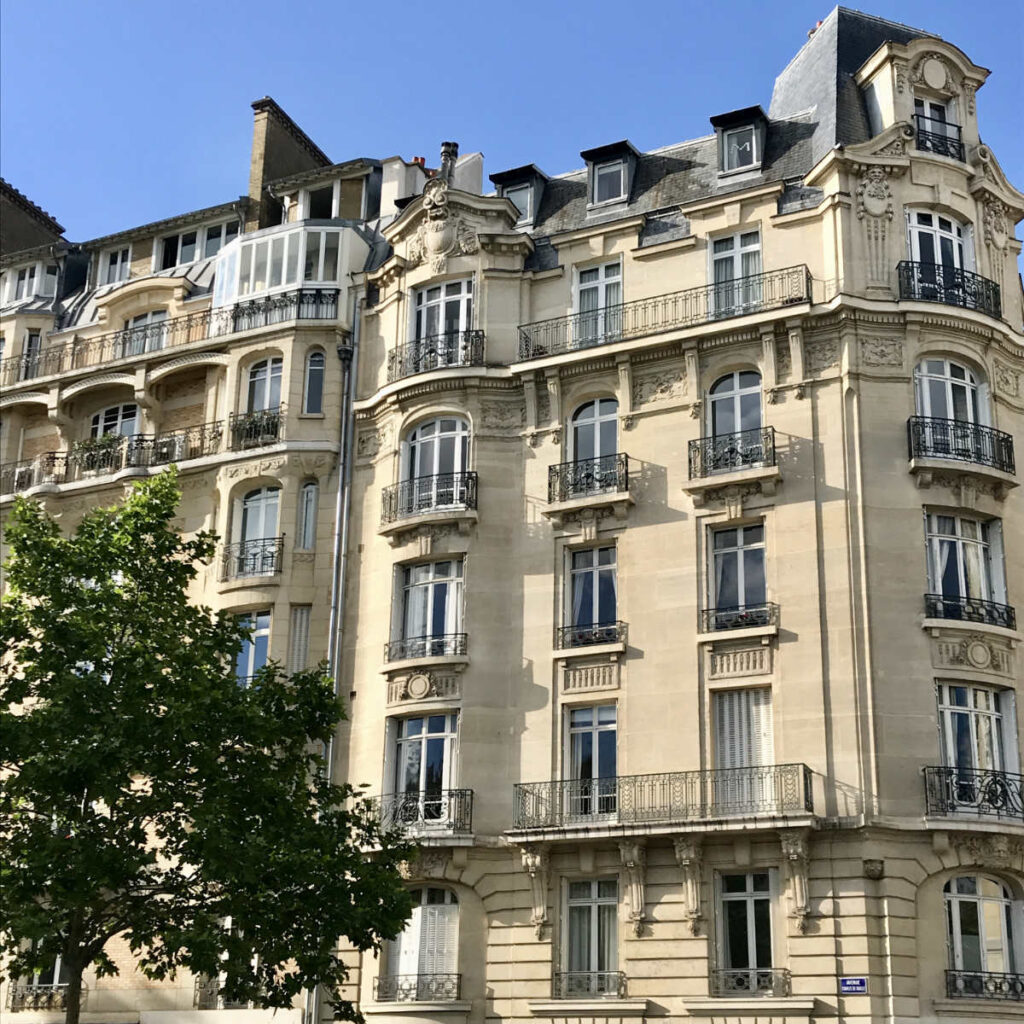
Young French Millenials resist moving out of Paris as long as possible. And then they have children, and realize that value for money, they may simply have to move outside the city to get some space.
There is a bit of a stigma to moving outside Paris, but with apartment prices skyrocketing, most people have no alternative. Paris is a historical city, and housing is limited. Normally, cities construct outwards or up (like London), but in Paris, this is not possible.
The riots and strikes that you see on TV about Paris are usually people in the poorer suburbs, who are protesting this physical and psychological barrier that keeps them from integrating into the wealthy center of Paris.
☞ READ MORE: Best cities to live in France
2. The business district is outside the city
Another famous decision in the 1960s was to put businesses outside Paris. The largest business district in Europe is in Hauts-de-Seine, not Paris.
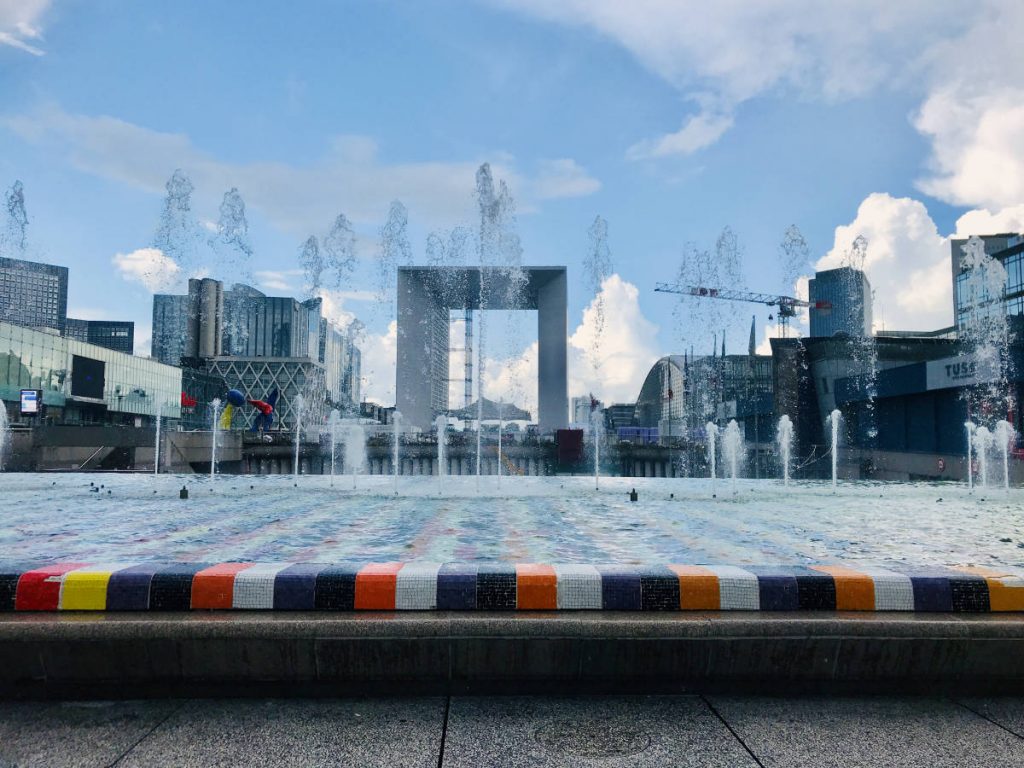
This means that for a lot of people, there is no actual reason to live in Paris. The city center of Paris (arrondissements 1-4) today is mostly airbnbs, high-ranking government officials, and rich people who consider their pied-à-terre in Paris to be their secondary residence.
Schools in Paris are closing at an alarming rate, as more locals move away. Paris se vide. Paris is emptying.
3. Traffic jams
On the other hand, 12 million people are trying to get where they are going every day, and that means constant traffic jams on the Péripherique. There are always traffic jams. You could be driving at midnight and there will be a traffic jam on the Periph’.
☞ READ MORE: What you should know before driving in France
4. Smog and Pollution
With a giant highway surrounding Paris, and the subsequent traffic jams, it is no surprise that air quality in the city is terrible. Smog alerts are regularly issued, and there are often days when high-polluting vehicles are banned from the city.
5. No alternative
There is no alternative to this highway, you cannot really get from North to South of Paris, or East to West by crossing the city. You have to go around it on the Périphérique highway.
With Paris trying to put limits on how many cars there are on the road and introducing new pedestrian zones, commuters and businesses are simply out of luck.
And there is no way to replace the Périphérique either. It is not like they can shut down parts of the highway for 6 months to construct it underground, or build another alternative. The area around the highway is already densely populated.
6. No emergency lanes
To make matters worse, there are no emergency lanes on this highway. Any sort of minor fender-bender will also cause traffic jams, as the gawkers gawk, and commuters complain.
To be fair, there is no place to put any emergency lanes, since both sides of the highway are heavily built up with apartment buildings and offices. Again, the Grand Paris area consists of 12 million people, it is a densely populated city.
7. Strikes and Protests
In a country where its people regularly like to strike, “a road with no alternative” can be a hazardous thing. During any large protest, the Périphérique is one of the first places protestors will try to disrupt with blockades.
A symbol of the capital of France, Paris is always the meeting point for protestors, and what better way to make your cause heard than by causing traffic chaos for millions of people.
☞ READ MORE: Should everyone strike like the French?
8. Homeless people sleeping in underpasses
One of the saddest parts of the Périphérique is the people who camp out under its underpasses. Since the highway is surrounded on both sides by large walls, most residents only access it by car.
With a large public housing shortage, for people who have no home, camping out under the highway seems like the best alternative to keep shelter.
9. Signage
And finally, the thing that drives me batty every time I take this highway is the signage. It doesn’t give a direction, like Periph’ North, South, East or West. Most of the signs around the highway say: Périphérique Interior or Exterior.
Since the highway is circular, there is an “inside” lane and an “outside” lane. But that doesn’t actually help the driver decide if he is going East, West, North or South!
Is he just supposed to go in a circle until he finds his destination? There’s always this slight moment of panic while driving when you try to decide: is it Interior or Exterior the quickest to my destination!? Am I going North or South?
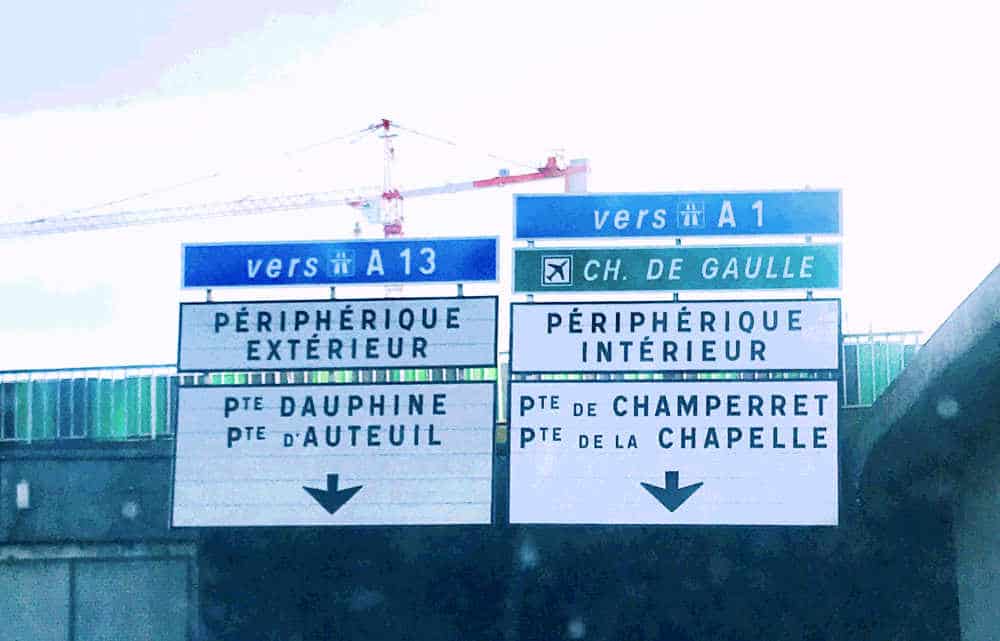
It simply boggles the mind that anyone would think this sort of signage is useful information.
And to make matters worse, many other large cities across France also have “peripheriques” surrounding them. Aie aie aie!

☞ READ MORE: Living in Paris: the Good, the Bad & the Ugly
And there you have it, Paris’s nightmare “wall”, on top of the old Thiers wall. You may be able to tell, I am not a fan. Is there a solution in sight? Not really, the Périphérique would cost a fortune to put underground, and the construction would cause chaos.
So it continues! C’est la vie ! If you enjoyed this article, you may want to read my article about the other pros and cons about living in Paris. It will certainly make you think of the City of Lights differently. A bientôt!
